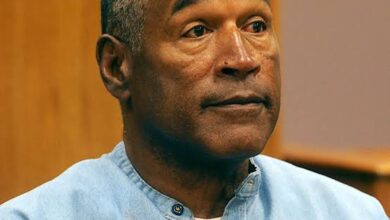By Lee Eric Smith, The New Tri-State Defender
Having seen “Hamilton” now during its opening week here at The Orpheum in Memphis, I get it. The reason Lin-Manuel Miranda chose to tell the story of Alexander Hamilton with a heavily influenced hip-hop soundtrack is because the story of Alexander Hamilton is, at its heart, a classic hip-hop story.
A poor young man, raised by a single mother until her death leaves him orphaned at 12, uses his wits, wisdom and words to claw his way to the top, earning money, power and respect along the way. He even loses his life in a gunfight over a senseless beef.
All of that and more are in “Hamilton.” It lived up to expectations, though not in the way that I imagined. If you’re expecting to be blown off the stage by the sheer power of the performances, well, that may not happen. Some of the performances were solid, but not mind-blowing, though there were several gems in the media show I attended.
That said, the power of “Hamilton” lies in its a diverse cast and the hip-hop flavored storytelling they solidly deliver. Together, they allow patrons to see a far-too-important-but-too-little-known perspective into the birth of the United States.
Gen Xers of a certain age will remember learning the preamble to the U.S. Constitution on Saturday mornings, because Schoolhouse Rock was able to cleverly weave history, animation and music into catchy jingles. All together now: “I’m just a bill. Yes, I’m only a bill. And I started out on Capitol Hill . . .”
Well, in ‘Hamilton,’ Lin-Manuel Miranda has taken those concepts to epic heights. You think that all you’re doing is listening to two characters battle-rap each other, but you’re really learning some of the bare-knuckle politics that shaped America.
Here are a few random thoughts to keep in mind if you’re on the fence about seeing “Hamilton:”
Casting Part 1: Remember that “solid-but-not-mind-blowing” thing I just wrote? I was mostly thinking about Joseph Morales, who played Alexander Hamilton in the Memphis production. Honestly, this may not even be his fault though. For years now, even first-timers like me have grown accustomed to looking for Lin-Manuel Miranda in that role — performing lyrics he wrote, no less. Morales has the unenviable job of being a fair-skinned Latino man stepping into a role made famous by a fair-skinned Latino man. The comparisons between Morales and Miranda simply CANNOT be fair to Morales . . . but they’ll be hard for viewers to overcome.
Casting Part 2: From the “gems,” category, there are a couple of star performances here. Ta’Rea Campell and Erin Clemons shine as the Schulyer (pronounced Skyler) sisters and their complex relationship with Hamilton. Marcus Choi portrays a stately George Washington. And Pierre Jean Gonzales, listed as a backup for Hamilton, captures the frenemy dynamic between the two men. You’ll have chills during these performances in particular. And Jon Patrick Wallace will crack you up as King George.
Casting Part 3: This is one of those things I wasn’t expecting. After about 20 minutes or so, the fact that you’re watching an Asian George Washington and a black Thomas Jefferson become irrelevant. It frees the viewer to see these characters simply as human beings — men and women making difficult decisions in troubling times. I found that refreshing, and it made me look at the founding of America in a different light.
The oppressed becomes the oppressor: As we commemorate 400 years of Africans in America, it becomes easy to forget: Slavery had been around for well over 100 years before the founding of America. And on top of that, the colonies felt they were being oppressed by King George. Government by and for the people had never been tried before, let alone succeeded.
I can’t help thinking about a child who grows up in an abusive home only to become an abuser in adulthood and how that cycle repeats through generations. Does that justify abuse or slavery? Of course not. But “Hamilton” made me appreciate how difficult it was to establish our democracy and how fragile it is.
Rapid rhymes: I’ll be 50 in a few months and the hip-hop I grew up on was Run-DMC, Fat Boys and Whodini. Meaning that while I have no idea what today’s mumble-rappers are saying, it still took a moment for my ears to calibrate what was being said on the stage during “Hamilton.” I could only imagine what it was like for the largely white, AARP-eligible crowd to follow the lyrics. If you’ve ever used the phrase “hibbety hoppety” outside of a reference to “Rapper’s Delight,” you may have a hard time following the story but hang in there.
Live or Tracked?: It makes perfect sense that a traveling tour of Hamilton would not bring a full on orchestra or band, simply for logistic and financial reasons. Though I did not see an orchestra/DJ, I cannot say for sure that Hamilton was performed over pre-recorded tracks. But the music did have the distinct feel of pre-recorded tracks, and if you’re used to hearing live musicians in a Broadway show, you’ll probably notice the difference. If you come out feeling the show was missing some energy, that’s probably why.
Buff up on history: I wouldn’t go as far as to say you need to read up on Alexander Hamilton before seeing the show . . . but it could help. While researching my earlier piece for this week’s print edition, I did, and knowing some of the plot points — Hamilton’s orphan past, the illicit affair that led to blackmail — helped me keep up when I couldn’t quite follow the rapid-fire rhymes.
In any case, “Hamilton” is likely to have you googling things like “Schulyer Sisters” and “Aaron Burr” when you come out of the theatre. You might even read up on The Federalist Papers. I think that’s a good thing. A better understanding of how our nation was founded can only help us understand these tempestuous times we’re in now.
“Hamilton” isn’t just entertaining, it’s also energetic and enlightening. Do NOT throw away your . . . SHOT!




